Mindfulness re-enchants life – it makes everything better and more enjoyable.
Like a sage with a playful twinkle in his eye, mindfulness is ancient. And yet, it still retains a childlike simplicity that makes it accessible to nearly everyone.
On a scientific and spiritual level, mindfulness has been proven to calm the mind, ground the body, and increase overall well-being and good health.
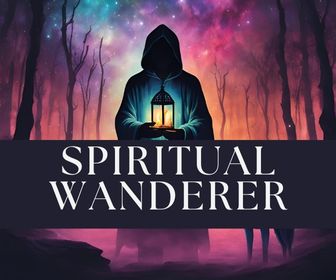
Spiritual Wanderer Course:
Being a lone wolf and a spiritual wanderer is a sacred calling in life – a unique and alchemical path of awakening. You don’t need to feel lost, alone, or stuck on your journey any more. It’s time to meet your soul’s deep needs for clarity, self-acceptance, and empowerment. Let us show you how …
Yet, when it comes to practicing mindfulness, many of us quickly get bored, distracted, or frustrated.
Aka. mindfulness sounds nice in theory.
But in practice, mindfulness exercises rapidly get shoved somewhere on our mental “to do” list – that, or it’s just ‘too difficult’!
How is it possible for 21st-century people who DON’T live in monasteries to incorporate mindfulness practices into their lives?
Is mindfulness even compatible with our busy and hectic lifestyles?
And how do we approach mindfulness if we’ve got the mind of a hyperactive monkey on steroids?
Table of contents
What is Mindfulness?

In a simple down-to-earth nutshell, mindfulness is about paying attention to what’s happening right now.
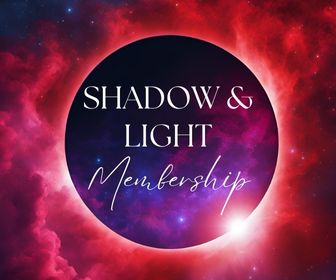
Shadow & Light Membership:
⭐️⭐️⭐️⭐️⭐ "Straight from the very first weekly email, this has been mind-blowingly powerful, the synchronicity and the on-vibe contents resonate uncannily with my soul’s current challenges." – Marie
As a species of human doings (not human beings), we’re almost always lost in the mindset of do, achieve, consume, and produce.
Our minds float to the past or the future. We’re frequently lost in maelstroms of thoughts, worries, plans, memories, or stories of what he-said-she-said.
Mindfulness is about helping us to chill out and focus on the present moment.
Mindfulness and Spiritual Awakening

As mainly a secular practice in the West, the mindfulness we usually hear about these days doesn’t involve a whisper of religion or spirituality.
Instead, mindfulness is promoted as a powerful way of increasing focus, work performance, lowering stress, and improving relationships.
Now, this is all fine and good.
Mindfulness doesn’t have to be spiritual.
But the good news is that it can be.
In fact, mindfulness is a practice that originally stemmed from Eastern spiritual meditation practices – some date this practice back to beginning around 2,500 years ago (1).
The reality is that mindfulness was initially intended for spiritual development and transformation. Words and practices originally connected with it were Sati, Vipassana, and Zazen (1).
Would you like to save this?
Your information will never be shared.
As a spiritual seeker (i.e., someone going through an existential crisis and spiritual awakening), mindfulness can help you:
- find your inner Center,
- disidentify with thoughts,
- reconnect with a sense of Oneness,
- experience moments of self-realization
There are a hoard of spiritual practices and techniques out there, but few are as old and therefore reliable, as mindfulness.
If you’re to take on any path or spiritual discipline, mindfulness is therefore definitely one you’d do well to commit to.
Mindfulness + Meditation (aka. the Match Made in Heaven!)
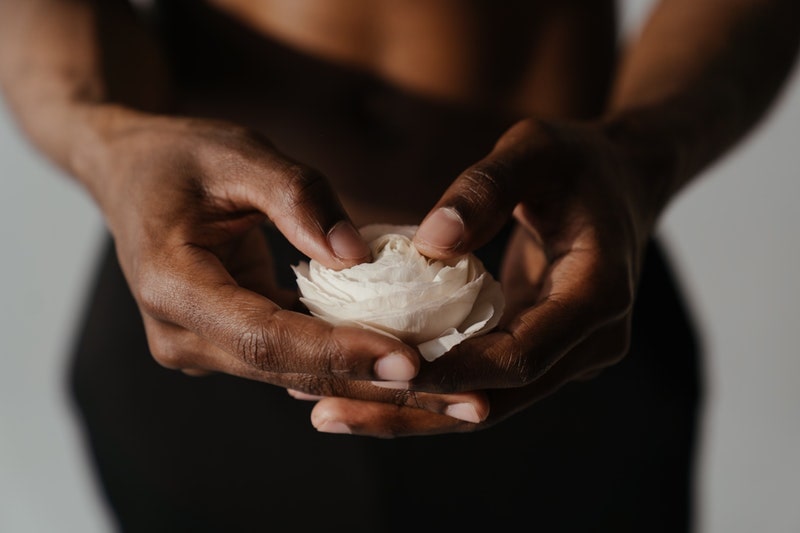
One of the simplest ways to commit to a daily mindfulness practice is by practicing mindfulness meditation.
Mindfulness done alone can feel pretty open-ended and vague – let’s be honest!
Mindfulness meditation, however, takes mindfulness and turns it into a meditative experience.
It’s a match made in heaven!
Perhaps one of the most powerful parts of mindfulness meditation is that it helps you to hone the qualities of:
- non-attachment,
- present moment awareness,
- clarity,
- the experience of our True Nature (which is deeper than thoughts and emotions)
Why You Are Not Your Thoughts

You are the sky. Everything else is just the weather.
– Pema Chodron
Of all the experiences I’ve ever had on my spiritual journey, understanding that I am not my thoughts was one of the most profound.
And it was thanks to mindfulness (specifically, mindfulness meditation) that I discovered this.
Why was this realization so paradigm shifting?
Understanding that we are not our thoughts is a central key to accessing inner peace and Soul alignment.
When we’re attached to and identify with our thoughts and emotions, we suffer horribly. Some people are so entrenched in their thoughts/emotions that they’re driven to suicide.
Mindfulness exercises and practices help us to go from “I AM angry,” to “I HAVE anger” or “I AM anxious” to “I HAVE anxiety.”
There’s a clear distinction here. On one hand we’re totally identified with our anger/anxiety. On the other, we realize it’s a part of us, but it doesn’t define us.
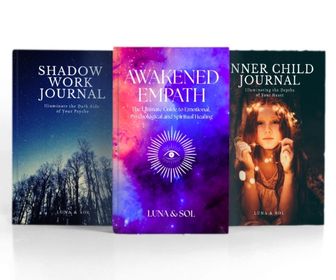
Spiritual Awakening Bundle:
⭐️⭐️⭐️⭐️⭐ "Luna & Sol, your words have been like salve to my soul. I have been searching for a way to heal and reconnect to my true self for so long (20 years) but have never found anything that truly made a difference… Until I read your books." – Stac
It’s All Spontaneous, Baby!
Mindfulness also helps us to realize the spontaneity of thoughts, feelings, and sensations – meaning we stop taking ownership of them!
Have you ever sat down to genuinely question where your thoughts and subsequent feelings come from, for instance?
If you have, you would’ve discovered that thoughts appear out of nothing in the mind, and just as quickly disappear into nothing.
Did you make that thought arise? Did you think, “I will now think about this, then this, then this …”?
Even if you do decide to think a certain way (like positive thoughts), did you control where that desire to think positively came from? Did you control the circumstances that led to this desire? No. Of course not!
To truly understand that our thoughts and feelings are impersonal (nothing to do with us) is a divinely shocking revelation. For me to discover this was liberating.
So … if thoughts and feelings are completely impersonal in nature (as in, we don’t own them), then how can they be “ours”?
Mindfulness reveals to us that the suffering we experience in life occurs when we claim these thoughts and feelings to be our own.
In other words, we feel anxiety, depression, guilt, and anger when we identify with thoughts as being “ours” – and not fluctuations of the mind.
“Where Does This Thought Come From?”

Is this hard to understand? I know it may be difficult to fully grapple with the fact that our thoughts and emotions don’t define us. We don’t even control where or when they come!
So I’m not asking you to believe anything I say.
You can experience it for yourself.
All you have to do is sit down for a few minutes, allow yourself to tune into the never-ending stream of thoughts in your mind, and explore where they come from.
Ask yourself, “where does this thought come from?”
It’s so hard for us to extract ourselves from the tangle of our thoughts and feelings because we have been taught since birth to identify with them.
So what I write may sound confusing — but that’s because we’re conditioned to believe otherwise! Like a fish that doesn’t know it’s swimming in the ocean, our lifelong conditioning causes us to adopt a myopic perception of life and ourselves.
To recognize that the fleeting nature of thoughts and feelings really have nothing to do with “us” opens a rare door. This door helps us to discover that which never changes within us: the field of calmness or silence that is the Soul.
This field of calmness, or silence, exists behind our thoughts, and it pre-dated our current sense of self.
We were born with this field of calmness before any concepts of “me” and “I” was ingrained into us, and we carry this calmness with us everywhere and in every moment.
By the way, if you want another way of thinking about mindfulness, I made this video with Luna:
8 Simple Mindfulness Exercises

Mindfulness is a way of befriending ourselves and our experience.
– Jon Kabat-Zinn
Mindfulness practices will only be effective if they’re taken seriously.
To put it bluntly, you must practice like your ass is on fire!
There has to be passion, willfulness, and dedication directed towards mindfulness, otherwise, you’ll quickly lose interest.
Lukewarm half-assed practice only leads to disappointment.
That being said, it’s normal to feel lazy. It’s only human to want to give up. That’s why keeping a journal alongside your practice can help to motivate you. Learn more about how to journal.
Joining a community full of mindfulness exercises and enthusiasts can help too (such as the InsightTimer, Calm, or Headspace app).
Remember, mindfulness isn’t about achieving some special state or perfect utopia. (It doesn’t exist!) Instead, mindfulness is simply about becoming aware of whatever is happening right now, whether that be a physical sensation, a sound, a thought, a smell, an emotion, etc.
Mindfulness goes hand-in-hand with allowing things to be exactly what they are in the moment, whether that be a feeling of loneliness …
… a sensation of dread in your stomach …
… a leaky pipe dripping …
… a dog barking, the need to shout, the need to cry, the need to laugh, the craving for food, and so on!
For over a decade, we've strived to make this website a haven of free, valuable information. Imagine a world where this knowledge wasn't readily available. If this post sparked a meaningful insight or helped you in any way, please consider a donation as a heartfelt "thank you" for keeping this resource free. Every contribution, big or small, allows us to keep giving back.
I love mindfulness. Here are some key mindfulness exercises to explore – suitable for total beginners and long-term aficionados alike:
1. Do everything slowly
Consciously slow down. Walk slowly, drink slowly, sit slowly, breathe slowly, talk slowly, move your body slowly — practice slowing down your natural tendency to rush everything.
Try doing this mindfulness exercise for at least 1 hour.
The immediate reaction to this practice is usually, “I can’t do that! I have deadlines to meet, etc., etc.”
But when you learn to go slowly, you’ll recognize the sheer volume of how many things you cram into your days which you don’t actually need to do!
As a result of this realization, you’ll learn to focus solely on what you need to do and become more efficient.
You can also choose one action to do slowly like walking, eating, or breathing.
Allow yourself to fully connect with whatever you’re doing slowly. Pay attention to each micromovement.
It’s normal to find it difficult (and frustrating) at first to adapt to such a slow pace – but stick with it!
Soon, with practice, movement itself will become a trigger to become more mindful and present.
2. Witness your breath
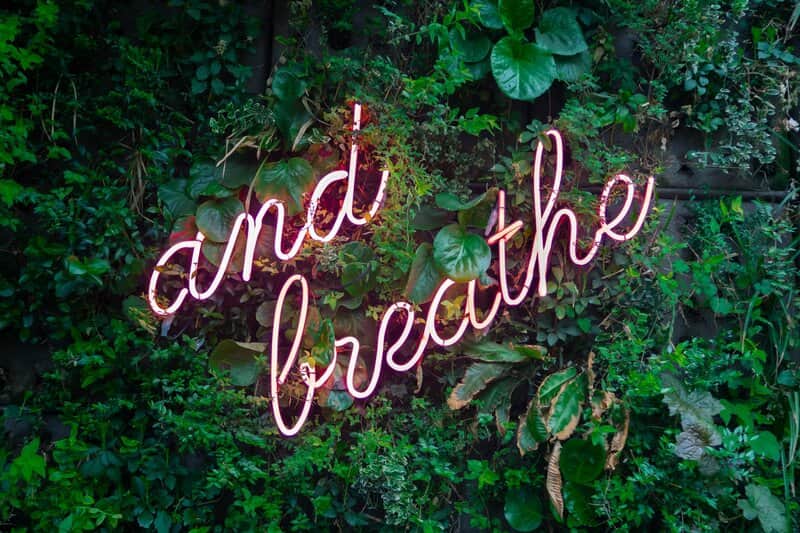
How many times have you tried to breathe slowly, only to find yourself getting lightheaded or panicky?
I know that when I’m feeling stressed, the worst thing for me to possibly do is to try and control my breathing. Instead of feeling relaxed, I feel more on-edge.
The better alternative to controlling your breath is to witness it rising and falling within you. How do you do this?
To witness your breath, you must consciously stop in the present moment and simply observe what your breathing is doing.
For example, if you’re breathing shallowly from your upper chest, simply witness and allow that breathing to happen.
Soon, the very act of witnessing and allowing your breath will calm you down, giving you the space to deepen your breathing if you wish.
No matter if your breathing is rapid or constricted or neutral or deep, just allow it to be that way. This type of acceptance is a natural form of mindfulness.
3. Feel your inner body
This mindfulness exercise technique was inspired by Eckhart Tolle in his book “A New Earth” in which he mentions the subtle energy inside us which he calls the “inner body.”
To feel your inner body:
Simply draw attention to one area of your body, such as your hand, foot, chest or head. Allow yourself to feel the life force energy in that one particular area. For example, let your attention settle fully on your hand. What does the inner body feel like there? Is it heavy, tingly, warm, tight, buzzing?
Eventually, you can draw awareness to other areas of your body until you can feel your entire inner body.
With practice, you’ll be able to become aware of your inner body even while talking with others.
This mindfulness practice also allows you to loosen your identification with your body, making it a good tool for spiritual awakening.
4. Let eating become a symphony of flavors and textures!

Make a habit of using food as a mindfulness anchor.
Generally, whenever we eat we’re doing something ELSE as well.
For example, most of us eat in front of the TV, eat while using our phones, eat while talking, eat while reading the newspaper, eat while thinking about something … etc.
We’re rarely fully present with our food.
Most of us have forgotten or unlearned how to simply BE with our food. Food is made to enjoy and nourish the body, yet most of us mindlessly shovel it down like the world is going to end.
Eating consciously is one of the most enjoyable mindfulness exercises out there – it allows you to enjoy the sensuality and indulgence of something we do every day!
So let the flavors, textures, scents, and temperature of your food enrapture your taste buds.

Spiritual Wanderer Course:
Being a lone wolf and a spiritual wanderer is a sacred calling in life – a unique and alchemical path of awakening. You don’t need to feel lost, alone, or stuck on your journey any more. It’s time to meet your soul’s deep needs for clarity, self-acceptance, and empowerment. Let us show you how …
When distractions arise (as they inevitably will), just draw your focus back to having a full-being experience of your food.
5. Dedicate one day a week to becoming mindful of each of your five senses
For example, on Monday you could pay attention to sound, on Tuesday the sense of touch, on Wednesday the sense of smell, etc.
You could even try incorporating other senses such as intuition or instinct, by paying attention to the physical sensations you get in certain places, situations, and around other people.
On Monday, for instance, you could train yourself to become alert to physical sensations such as when you touch something, brush against someone, move your body, type on your computer, etc.
Eventually, you’ll begin to become anchored firmly into the present moment through all of your senses.
6. Spend more time in nature each day

Spend more time outdoors. Even if all you can see is a skyline of rooftops or buildings, you always have the sky to gaze at.
Living indoors all day tends to restrict the mind immensely. By going outside, you open your mind to experiencing more expansion and relaxation.
Sitting outside is one of the most simple mindfulness exercises out there that involves minimal effort. All you have to do is commit to sitting and watching whatever comes into your field of vision for at least half an hour.
7. Do a walking meditation
One of my favorite mindfulness exercises is doing walking meditations. The convenient thing about this practice is that you can incorporate it into your daily exercise regime.
Walking meditation is extremely simple and profoundly grounding. All it involves is becoming aware of the sensation of the ground beneath your feet.
I’ve been doing walking meditations for a few years now. My favorite part is feeling the rhythm of my feet against the earth in all of its varied textures (wet, soft, gravelly, rocky, etc.).
To practice walking meditation, allow your focus to rest in the movements of your feet. Literally, “put yourself in the shoes” of your feet and purely experience what they are experiencing.
Remember, no sensation has to be “better” or “worse” than another. The purpose of mindfulness is to not only live in the moment but to also become aware of the thoughts that arise in your mind and let them go.
Walking meditation is a wonderfully active way of letting go of thoughts and being right here, right now.
8. Gratitude prayer
Saying a prayer of thanks for what you have every day is one of the most transformative mindfulness exercises out there.

Shadow & Light Membership:
⭐️⭐️⭐️⭐️⭐ "Straight from the very first weekly email, this has been mind-blowingly powerful, the synchronicity and the on-vibe contents resonate uncannily with my soul’s current challenges." – Marie
Gratitude can only ever exist in the present moment, thus, it is the perfect mindfulness tool.
When we’re lost in our thoughts, it’s so easy for us to take what we have for granted and constantly seek more.
Gratitude grounds us in the here and now. Whether you believe in God, Life, Spirit, science — it doesn’t matter — verbalize your thanks either silently or out loud, and you’ll become more present-minded.
Here’s a sample gratitude prayer,
Thank you God/Life/Spirit for all that I have in this eternal present moment. I am so grateful and blessed.
You can also try gratitude journaling where you list the ten things you’re thankful for each day.
Read: 7 Scientifically Proven Benefits of Being Grateful »
Mindfulness FAQ

There are five main ways to practice mindfulness that correspond with our five senses:
– Mindfulness of sounds
– Mindfulness of smells
– Mindfulness of flavors
– Mindfulness of feelings/textures
– Mindfulness of what we see
To begin practicing mindfulness, start small:
1. Focus on one mindfulness exercise
2. Commit time to it each day (e.g., set a reminder or notification on your phone)
3. Journal about the discoveries or epiphanies you have
4. Continue the mindfulness exercise for one week
5. Reflect on what you’ve learned (and continue or find a more suited practice!)
If you struggle with anxiety, being mindful might feel daunting. Trauma-informed mindfulness author David A. Treleaven advises staying grounded and oriented to your surroundings. Focus on that which makes you feel safe and relaxed. For example, that might mean being mindful of a pleasant smell in the air or the trees outside. If being mindful of your breath helps, focus on that. Try to avoid anything that triggers your anxiety.
Conclusion
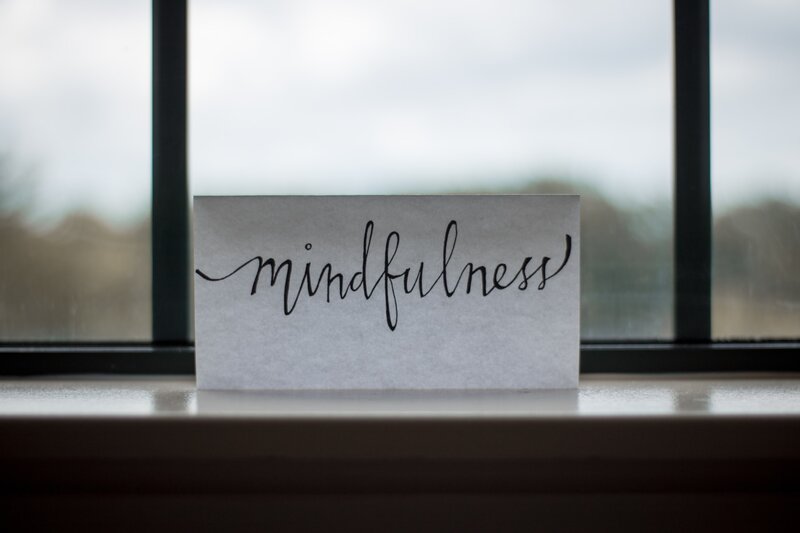
Mindfulness is the practice of returning back to reality again.
Remember that thoughts and feelings never objectively mean anything about you: they simply arise and fall, come and go.
In the words of mindfulness teachers Danny Penman and Mark Williams:
Mindfulness is about observation without criticism; being compassionate with yourself. When unhappiness or stress hovers overhead, rather than taking it all personally, you learn to treat them as if they were black clouds in the sky, and to observe them with friendly curiosity as they drift past. In essence, mindfulness allows you to catch negative thought patterns before they tip you into a downward spiral.
I hope these eight mindfulness practices have inspired you to find the magic again in everyday life.
Mindfulness is a powerful tool that can help us move through inner obstacles, dissolve blockages, and find a sense of inner peace and freedom.
I’d love to know your favorite mindfulness exercises and practices. So share them with me in the comments!
If you need more help, we offer 3 powerful ways to guide you on your inner journey:
1. The Spiritual Wanderer Course: Feeling lost or uncertain about your path and purpose in life? Gain clarity and focus by learning about the five archetypes of awakening within you. Discover your deeper path and purpose using our in-depth psychospiritual map. Includes 3+ hours of audio-visual content, workbooks, meditations, and a premium test.
2. Shadow & Light Membership: Seeking ongoing support for your spiritual journey? Receive weekly intuitive guidance and learn to embrace your whole self, including your shadow side. Deepen your self-love and receive personal support from us.
3. Spiritual Awakening Bundle: Ready to soul search and dive deep? Access our complete "essentials" collection of beloved journals and eBooks. Includes five enlightening eBooks and seven guided journals, plus two special bonuses to further illuminate your path.








OK, now for the question no one seems to want to ask or have been distracted from asking……
With all this talk about mindfulness, no-thought, and being the watcher behind the thoughts, has anyone considered:
What IS the default state of being for non-thought?
Not sure I’m being clear with the question. But basically we all know what its like being in the state of having thoughts. And then we’re now told that that’s an additional state, that there is a default state that is without thought. But WHAT is that alternative? What does it feel like? The average person can’t imagine “being” without thoughts.
Thanks for the curious question Xen.
I think a common misconception is understanding mindfulness as ‘being with no thoughts”. You can be mindful of your thoughts by recognizing that you’re the space in which the thoughts are arising.
The other problem about asking about ‘states without thoughts’ is that the very definition of a ‘state’ implies it’s a temporary occurrence, a state has a beginning and an end like say when people take psychedelics and enter altered states.
Mindfulness in its truest form is beyond states, it’s where states manifest themselves because it’s something that is ever present even in our sleep (as reported by yogis who practice dream yoga and can lucid dream.)
I hope that helps clarify things.
Meaning, it is comparable to the Void?
It can be denoted as the default state of being?
The void is only a part of it, there is also the yang to that yin which we could call ‘pattern’. Both arise together. The Buddhist have a different terminology for it and use ’emptiness’ and ‘form’.
But focusing too much on the void without acknowledging the form can easily get slippery and turn into a form of nihilism where ‘everything is meaningless’.
…but remember: the thought “I am not my thoughts” is just that…another thought!
Ah ha! So true Tony. ;-)
I have a problem with the word ‘mindFULness’ relating to something or some state to be desired, and it is this: I believe most people today associate our mind as being just ‘our’ thoughts and emotions that are present somewhere inside our heads that determine how our lives play out and are the only way we experience ‘life’.
In the comment you made above for example, about having anger rather than saying I AM Angry (sad, happy, lonely ,depressed, whatever) we say i am angry because at that moment our mind and thoughts are almost entirely full of Anger, or whatever emotion or state of being is in our thought or mind. We are mind full of that thought Emotion.
To me ‘Mindfulness’ would be better named Mind Expansion or Mind Emptying in order that we become more aware of everything else that exists at the present moment than the one thought or emotion that has filled our awareness. The mind is capable of accessing limitless silence and space in which to more proportionally (appropriately) see our finite emotions. Mind expanding practices that allow us to see there is so much more than just the one thing we may be focussing our thoughts upon (intentionally or ‘unavoidably’) would help us all develop a better sense of proportion of what and who we truly are and not stay so trapped in an unsatisfying or unfulfilling life.
We are all so much more – in that there is so much more to ‘us’ and within ‘us’ – than most of us ever believe to be the case.
Have Faith.
Bob
Hey Bob,
I couldn’t agree more, there’s huge unnecessary obstacles to overcome just in trying to communicate these topics with the right language, let alone trying to explain in any way the different in experience of ‘having a thought’ vs ‘being that thought’.
Mindfulness, from my recollection, originates from the Pali word ‘sati’ which means “to remember”. So while the original is more centered around memory (memory of what exactly will confuse beginners as well, for remembering your ‘true nature’ is also problematic), the translation of mindfulness implies something either some connotation of conscientiousness or as you point out, a mind full of something.
In this regard I prefer the Mind Emptying, or as the Zen Buddhists prefer, Emptiness (for even mind emptying might make people feel they need to have no thoughts at all.)
This little exploration on the single word of mindfulness really just shows you how warping of reality our minds can be, with their many interpretations of reality, and our confusing those interpretations for the reality itself.
I appreciate your sharing of thoughts Bob
Take care!
The Spiritual Fundamentalist
To me, this is found as part of the duality of this world where opposite parts play off against each other, with the highest thought dominating the lower thought in an endless critical cycle. Like two birds of prey on separate rooftops eying off against each other.
The higher self demonstrates its powers of deduction, intellect, and perfect Spiritual knowledge gained from many types of experiences, some dark and sordid, while others are totally perfect and enlightened. From books, different groups of religious experience and practise with the varied learning experience, and formulating decisive grounds of what is true and valid from what is not acceptable as part of an ongoing belief system.
While the lower self resorts to devices and bane practises, obsessive thoughts, fears, confusion and indecisive modes. Preferring to not being geared towards change. It gets stuck in these areas in laziness, in doubt and its own ways of being.
So like two birds of prey, the higher self in strict belief wage a campaign against the lower self keeping rigorous adherence to its principles in detail that it is literally true and fundamentally correct in every detail of how to function in the spiritual life. So the two birds fly at each other, locked in a warlike battle till only legs and de-feathered bodies remain. perpetuating inner violence and inner splits, between self and nonself, instead of love and integration of all parts with equal value.
Using the Mind’s Driver
Like being a learner driver on our vast road network, we still seem to not know sufficient material of how consciousness works. How it can be driven or drives us following fully the rules and regulations of engagement. It seems at times to not always follow the road map of the mind and spirit in a free and harmonious way. We get lost in driving the wrong way in mind, based on obsessive negative desires, and influences, failing to give way to signals and stop signs. Not wanting to slow down and listen to our calm inner voice, nor to change gears and drive more slowly and in a positive way.
As consciousness creates the awareness of our intentions, the road map, the vehicle we drive, and how we think and feel in our perception of the world. So perhaps it’s time to just let go of the outer clatter of this world, with all its noise, violence, and viral devastation. To reclaim better inner driving skills, a better understanding of how we Spiritually function as human beings and rebuild, heal our inner peace and harmony.
Dark Night ….Easing Negative Anxiety 21/6/21
I awoke early with my wife needing assistance for pain relief and chestiness. After helping her back to sleep, I began having random negative thoughts in my mind without pausing nor ending. This built up, and as my wife began to snore loudly, I snapped about the noise and reawakened her with some annoyance. After this and feeling guilty, I dressed, apologized and went into our front room to meditate and sort myself out, not disturbing her again.
Within the initial confines of my thoughts, I made a huge discovery. By being in the negative dark side, I was being my own worst enemy by confining my thoughts to a narrow negative band. Which was spiralling me further down into more of the same by association. So using keywords of a positive nature I reconstructed my own thought pattern. Being selective to only accept kind positive words, non-critical ones, to rebuild positive modes and aid relaxation. At first, this seemed a daunting task and impossible while my monkey mind jabbered its nonsense. But having captured and replayed bits of thought flying past on the surging pathways, full-on with negative material…I changed them …this worked! Gradually the negative material
subsided which completely surprised me, giving way to old more familiar outdated thoughts, which could then be cleared. Doing this relaxed my body too, sufficiently to allow my mind to destress and more positive thoughts to return. Of course, this does not work every time for everyone. But did help me to refocus and ease things when anxiety strikes and takes hold.
Thank you John for sharing your reflections through the whole process, being able to navigate that internal chatter in a mindful way is something we can all benefit from and I’m grateful to see the process written out to inspire others to know what this may look like. :)
Thanks, Mateo Sol for allowing this reflective material to be written as it often helps to release certain thoughts and aid understanding, the position of knowledge. As we are all on this life journey together.
So if it can help others in some small way to expand their own Spiritual knowledge and practise, then I am grateful too.
A fantastic reminder on my birthday/ the solstice! Thank you for this article, today I am going to do things extra slowly and simply be with whatever arises!
What a wonderful birthday date Ella, I think the slow approach sounds like a great idea for the day :)
thanks for doing these, i love them, this one in particular!!!!! thank you you kind souls!!! sending you love and gratitude xxx
You’re most welcome Adele, it’s our joy to share and learn along the way. :)